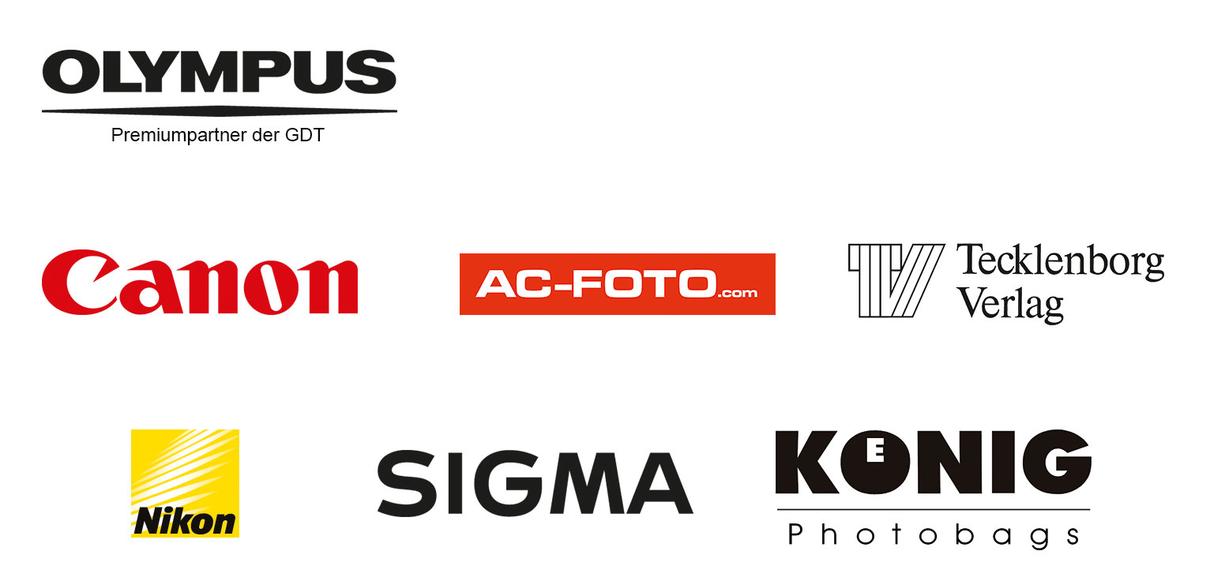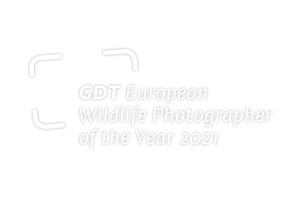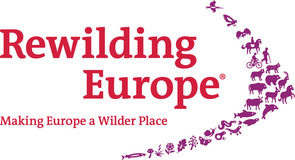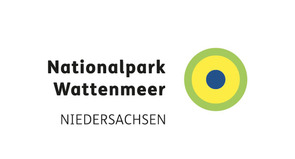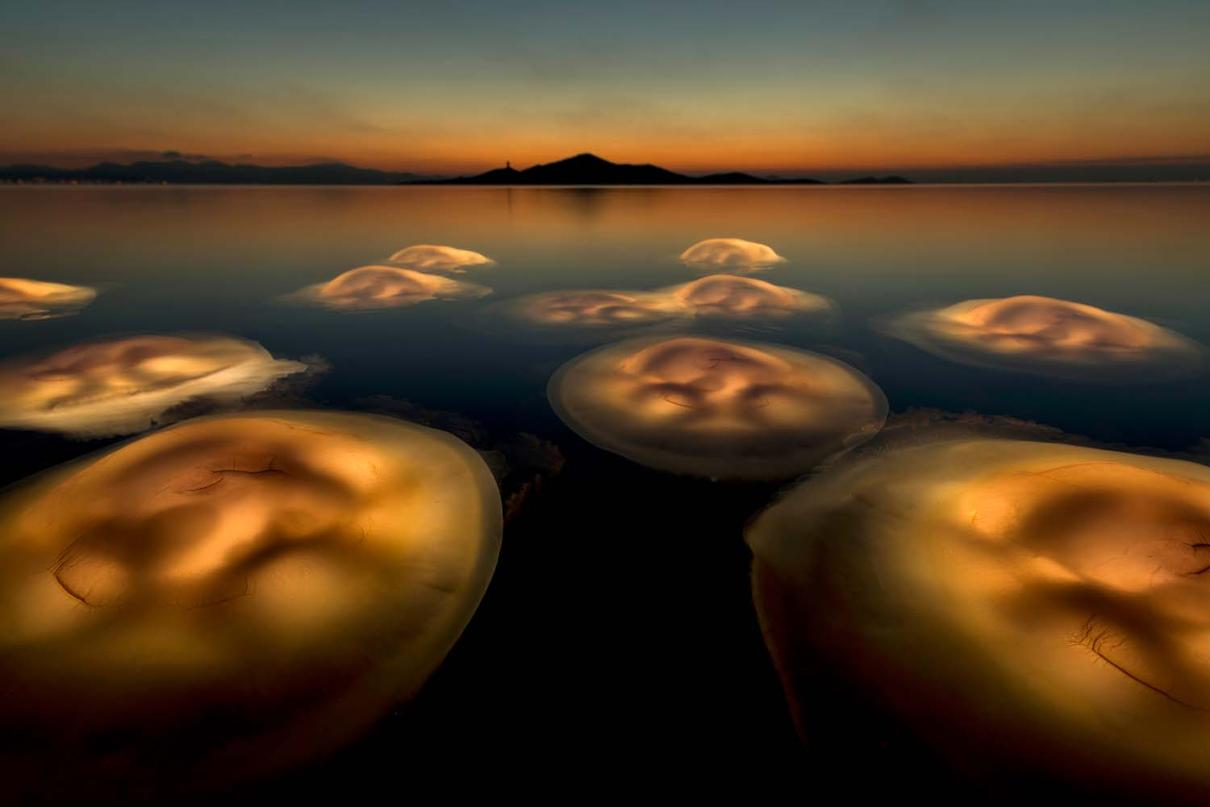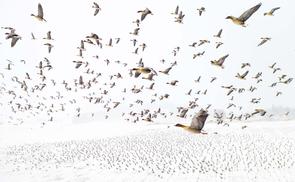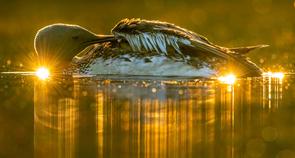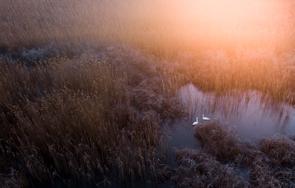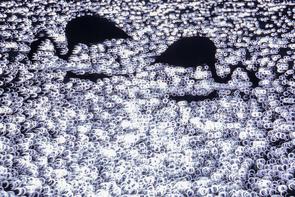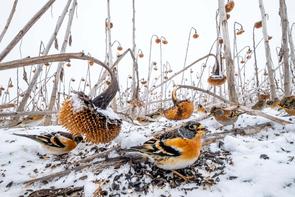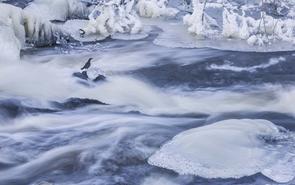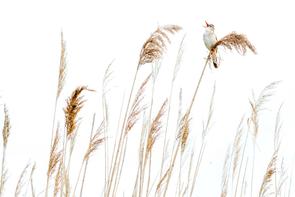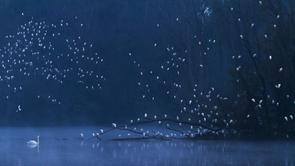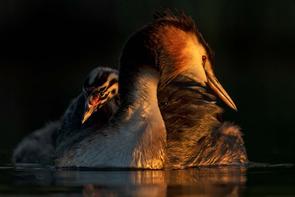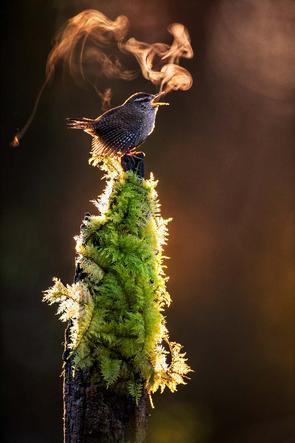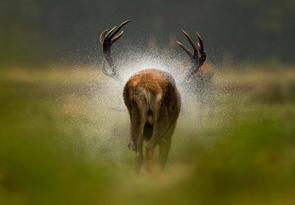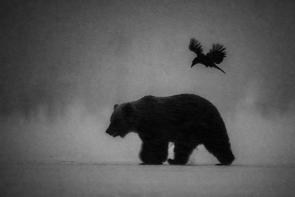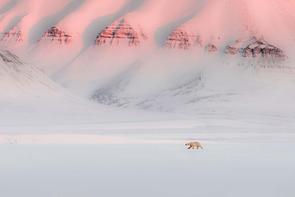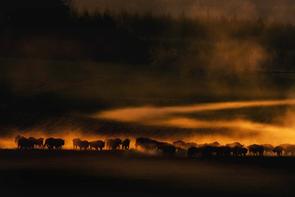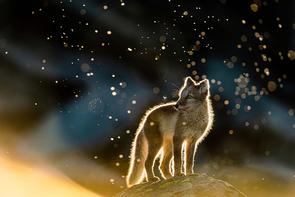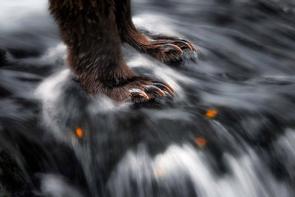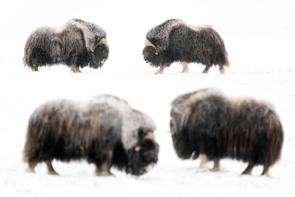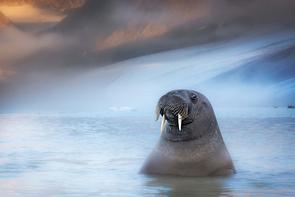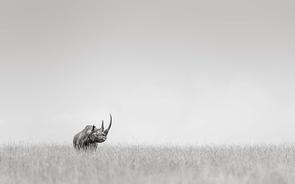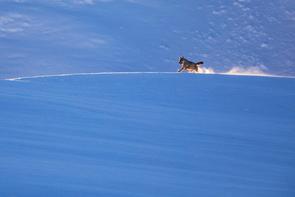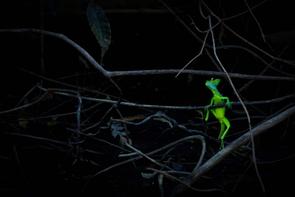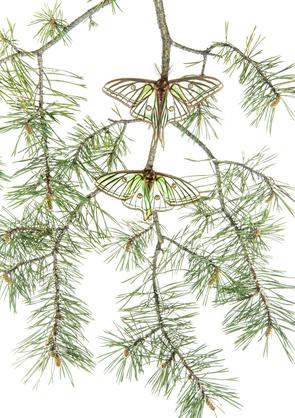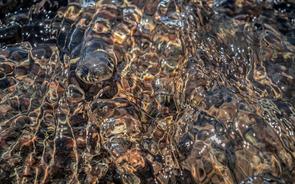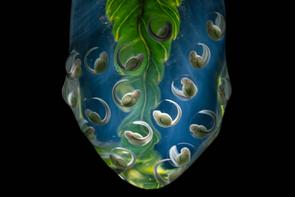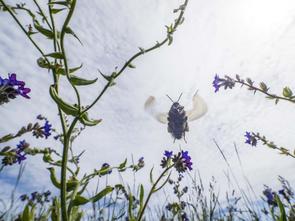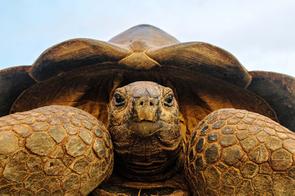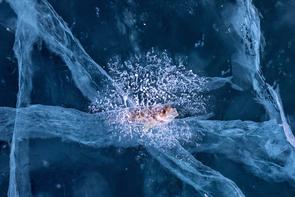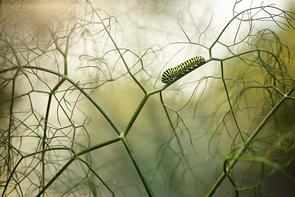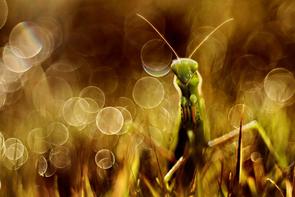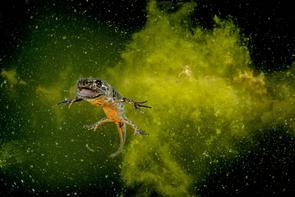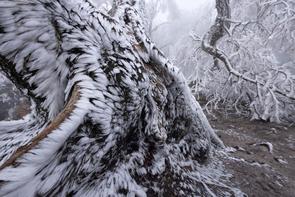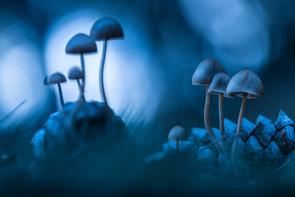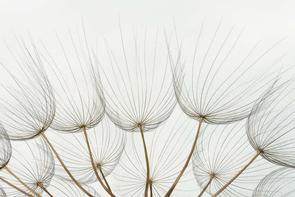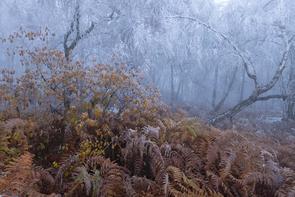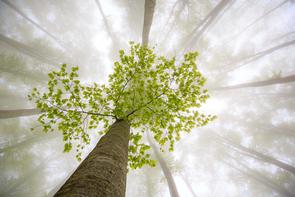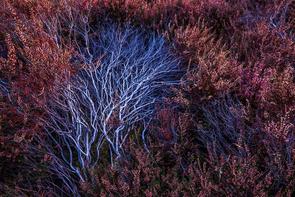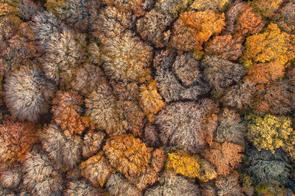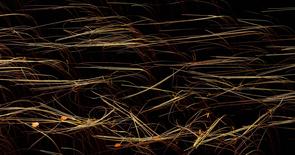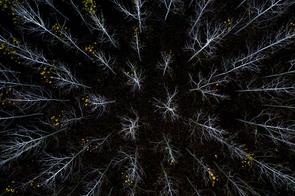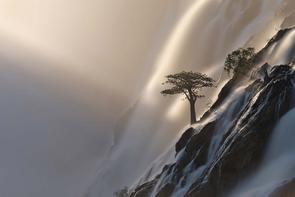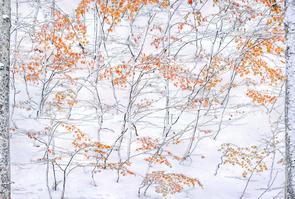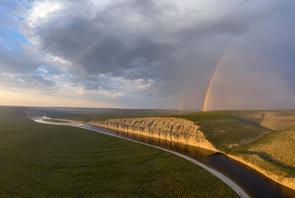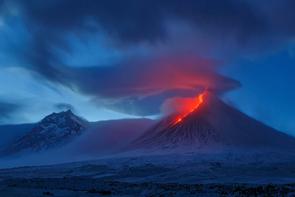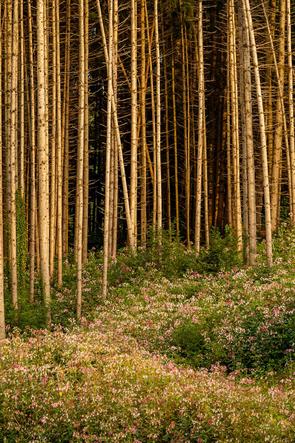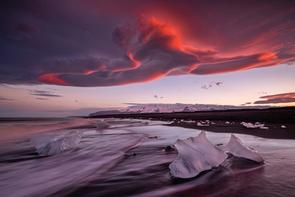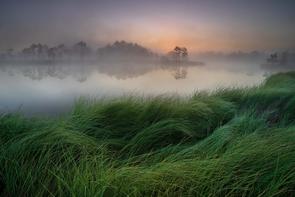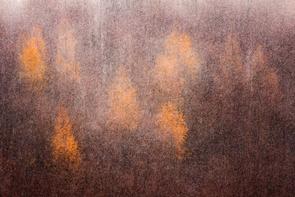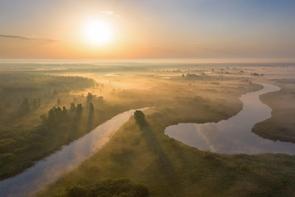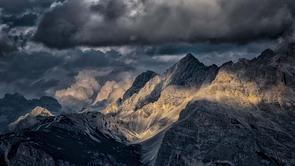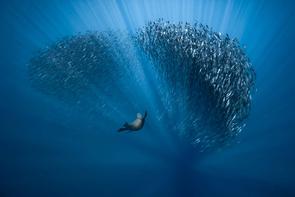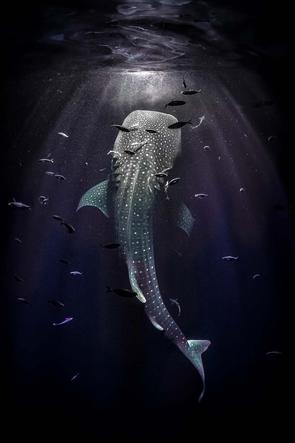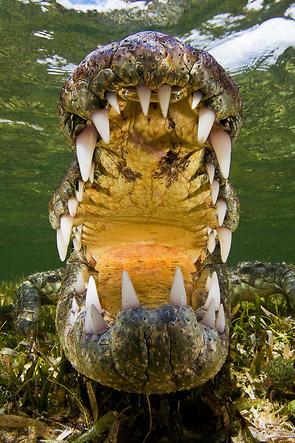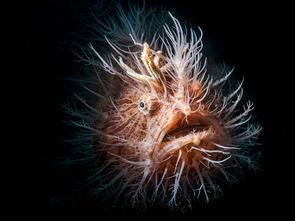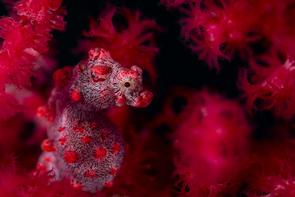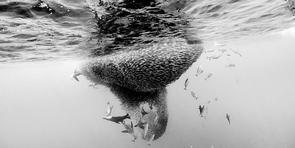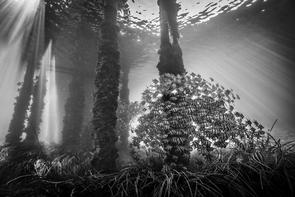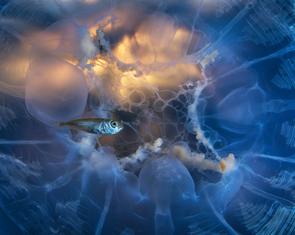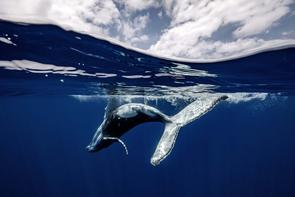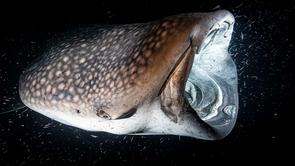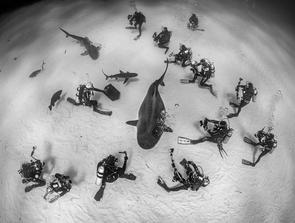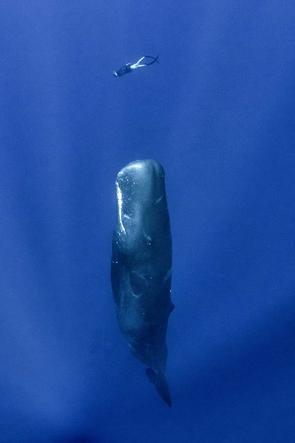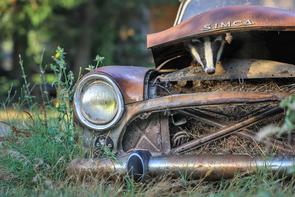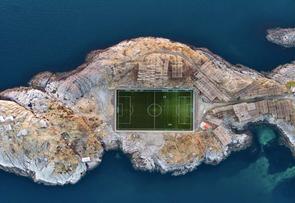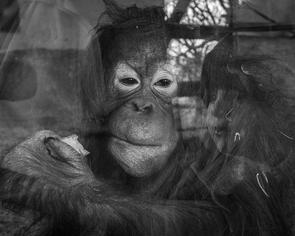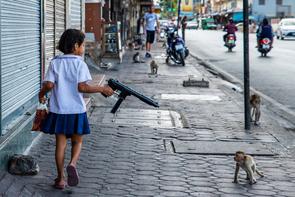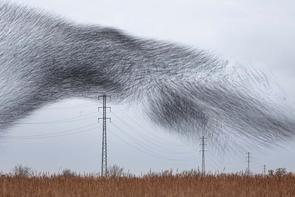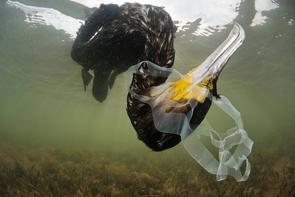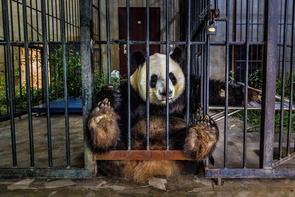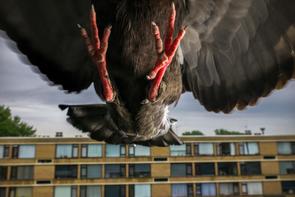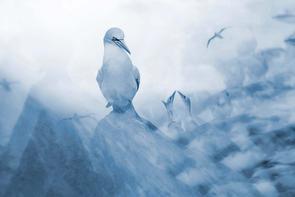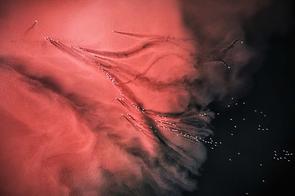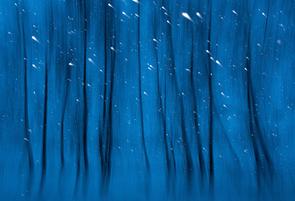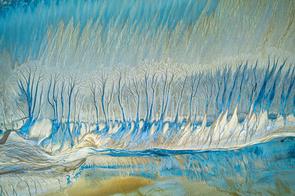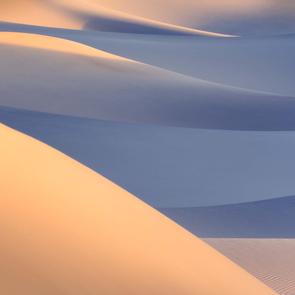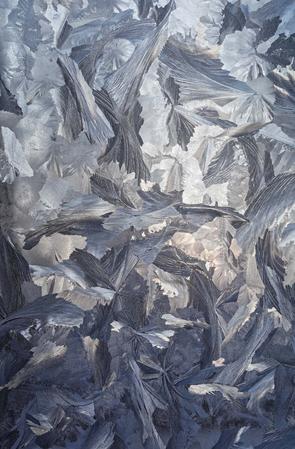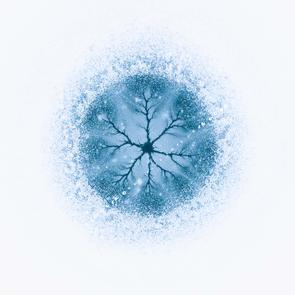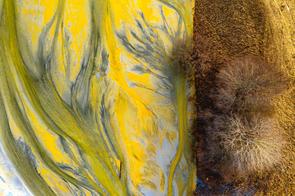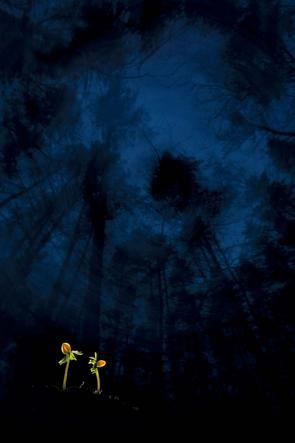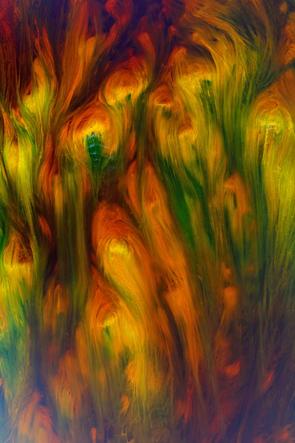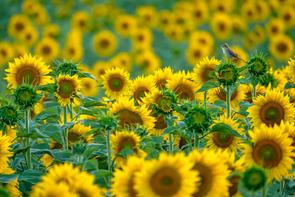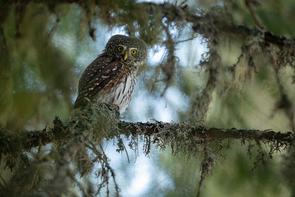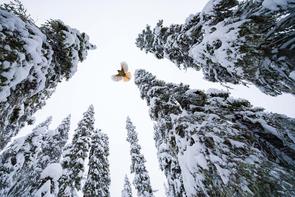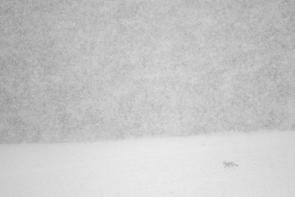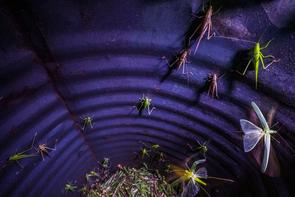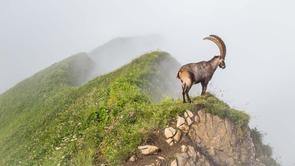Overall Winner: Angel Fitor (Spain)
MEDUSA BALLET
There were actually only two specimens of the jellyfish species Cotylorhiza tuberculata that were moving just below the water's surface, driven by their own contractions and the light eddy current that prevailed on this day. The eleven medusae seen in the image are the result of eleven flash releases below the two individuals as I followed the movement of the cnidarians through the frame. For more than six years I tried to realise this image idea and I had to put up with countless failed attempts, which is not surprising considering the unpredictability of the factors that were prerequisite for success.
Nikon D800, 1.8/20mm, ISO 50, Roscolux filter, Cinegel Roscosun 1/8 CTO on the strobe, tripod
ECOLOGICAL DISASTER AT THE MAR MENOR – the place where Medusa ballet was created
Essentially the problem in Mar Menor has been excessive, misplanned development in the region’s agriculture; and secondly the massive tourism building development. It has become a paradigm for bad planning, corruption, and lack of mid- and long-term vision. The most relevant consequence of these practices, and the one why the ecosystem of the lagoon has crashed, is the eutrophication of its waters. It´s simple: too much nutrients in a virtually closed system led to a massive bloom of phytoplankton that consumed all oxygen putting massive stress on the whole system. In turn, this caused the die-off of most seagrass and seaweed fields that were the engine of the lagoon’s life. There have been several incidents since the nineties, but those of the last five years have been especially destructive. My picture was taken in 2014, the season right before the severe crisis of recent years started. It is an ode to the unique natural heritage the lagoon Mar Menor once was.
www.theguardian.com/environment/2020
BIOGRAPHY ANGEL FITOR
Angel Fitor is a nature photographer, photojournalist and author with a background of decades of self-study in marine science who has dedicated his life to giving a voice to the earth's aquatic ecosystems. After becoming a professional photographer in the late 1980s, his work has been published in a variety of publications, including reference books, online media and various magazines such as National Geographic and GEO. His images have been widely recognised in the most influential photography competitions of our time. He has received awards at World Press Photo, NHM Wildlife Photographer of the Year, GDT European Wildlife Photographer of the Year, Big Picture, National Geographic Photo Contest and Sony World Photography Awards. Fitor has been a speaker at WildPhotos and a member of the jury in the competitions of NHM Wildlife Photographer of the Year, GDT European Wildlife Photographer of the Year and MontPhoto. In addition to his own productions, he regularly works as a photographer, cameraman and natural history consultant for leading broadcasters, including the world-renowned SilverBack Films and the BBC Natural History Unit. Angel Fitor strongly believes in the potential of photojournalism to bring about change on pressing environmental issues, and in the power of photography to inspire sustainable, intergenerational awareness, empathy and love for the natural world.
www.seaframes.com
Category: Young Photographers to 14 Years
This category invites young photographers in two age groups (up to 14 years old and 15 to 17 years old) to enter their five best photographs, irrespective of the themes of the categories (they do NOT need to comply with the given categories).
Category: Young Photographer 15 to 17 Years
Category: Fritz Pölking Prize
The Fritz Pölking Prize is a special award of the competition European Wildlife Photographer of the Year, awarded by the German Society for Nature Photography (GDT) and Tecklenborg publishing house since 2007 in memory of the late Fritz Pölking. It is given away annually to honour exceptional work in the field of wildlife photography.to Fritz Pölking Prize
Category: Fritz Pölking Junior Prize
Introductory note to the GDT contest European Wildlife Photographer of the Year 2021
From Prof. Dr. Beate JesselImages say more than a thousand words - this is especially true when it comes to the award-winning photographs of the competition GDT European Wildlife Photographer of the Year. Through the illusion of a swarm of jellyfish, this year's expressive winning photo by Angel Fitor Medusa ballet evokes associations with a process we can observe everywhere in heavily overused seas: Marine ecosystems that are no longer unimpaired and the warming of the oceans as a result of climate change cause an increase of single species, such as the jellyfish species Cotylorhiza tuberculata. The dominance of a few species leads to displacement effects that create problems for marine nature and have negative effects on fishing and tourism.
Our German North Sea and Baltic Sea are also in poor condition and their ecosystems are far from their natural state. While biodiversity is steadily decreasing, practises such as fishing, shipping and wind energy, but also pollution and waste are increasing. Marine conservation is therefore more important than ever and can help not only the maritime economy in many ways in the long run, for example by securing stable fish stocks, but also in the fight against climate change.
This year the GDT - German Society for Nature Photography celebrates its 50th anniversary. Since its founding, it has championed nature photography that is equally committed to authenticity, nature conservation and artistic quality. That this is no contradiction but a fruitful triad can be read from the fascinating photographs and nature impressions of the competition European Wildlife Photographer of the Year 2021, which once again underline the exceptional quality of European nature photography.
For the second time, the Fritz Pölking Prize was awarded as a separate category in the competition, in which several pictures could be submitted as part of a story. The award went to Jasper Doest's photographic project, which impressively depicts the traditional cricket harvest in Uganda. Its future is threatened by climate change, deforestation for palm oil plantations and the use of pesticides as insect habitats are being lost. The images raise our awareness that insect decline is not only an issue in Germany, but can directly affect people's livelihoods in other parts of the world.
The unique images of Europe's best nature photographers in this competition show the beauty, uniqueness and fragility of nature. In view of the global biodiversity and climate crisis, they also demand a respectful approach to nature and issue a call for action.
Prof. Dr. Beate Jessel
President of the German Federal Agency for Nature Conservation
Patron of the competition
Jury’s comment
by Jim BrandenburgThe jurying of photographic competitions has always been filled with many varied complex feelings in my experience. It is impossible for me to detach and separate from those persistent feelings when seeing the entries that have been submitted from the thousands of hope filled photographers. Having been on the other side of this process, I know well that hope and the expectation that is imbedded in each one of the images. They are all precious captured moments in their own individual secret ways. If we were somehow able to transport ourselves back alongside the photographer to the moment of the making of or even perhaps the more powerful moment of the discovery after creating the image would be quite revealing.
On a few occasions I was fortunate enough to have all the stars aligned in making my entered photograph and then the alignment in place again when the jury viewed my entry. I also have strong memories of images and stories I entered and felt strongly about that were dismissed. One’s life and professional standing will change if those stars properly align, mine did. Those imbedded hidden intimate secrets in the submitted frames carry a kind of quiet desire, if not a whispering plea. I feel there is form of mysterious energy carried with them. I sometimes feel it, then see it. I wonder how many other jurors subconsciously react to the unseen. I have never asked. It can be exhausting at the end of each day after making thousands of decisions lasting sometimes over weeks during a large competition like this. Doing this alone in the early pre-judging “weeding out” stage feels more draining somehow. But I feel fortunate to have worked with such thoughtful and harmonious colleagues this year in the GDT competition during the Zoom sessions where we were all connected on a screen from many parts of the world. The responsibility of deciding the “chosen” alone, weighs more than when working with a talented team with a consensus.
This subject of a photograph carrying an elusive and not easily described “feeling” is one that I often think about. It can’t be measured and changes at times; the effect can be greatly varied with different people. We all have seen this many times. This adds another complexity to the judging process – the voting has a different result on different days with the same selection of images. It is common. This speaks to the star alignment I mentioned. I have seen photographs that were passed over early in the judging and then irrevocably rise to the top in the final stages and vice versa. I also feel some photographers are able to first feel that elusive quality in a subject, then see and capture it. I often wonder if it is a quality one is born with or is it acquired and fine-tuned early in life, perhaps both. This question has been with us since the discussion of creativity and art began.
I’ve equated the act of making an exposure of a subject I care deeply about to a kind of quiet personal prayer, created in a near trance-like resolute state. Certainly, worship is a word that could describe the feelings some of us have towards nature. Our images become “offerings” - like prayer flags. Hopefully their existence in the world will influence or nudge someone, somewhere in an inspired direction. Tibetan prayer flags are used to promote compassion, strength, and wisdom. The flags do not carry prayers to gods, which is a common misconception; rather that the “prayers” will be blown by the wind to spread the good will and compassion into all-pervading space. Inspiration …
Angel Fitor made the inspired, other world-like overall winning photograph in this year’s GDT competition - Medusa Ballet. We have never met or talked about his experience making it, but I have a strong sense he was in that almost prayer-like realm when his prizewinner was made. His powerful image strongly spoke to us jury members on many levels and also speaks to the haunting environmental issues in the Mar Menor lagoon in Spain where he lives. Perhaps this winning image will go on to speak on a larger stage and make the kind of difference that most of us seek.
On behalf of the jury,
Jim Brandenburg
We´d like to thank our sponsors:
